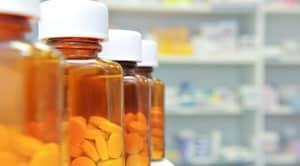
High drug costs are burdening seniors with excessive out-of-pocket expenses and straining the Medicare program’s finances. A February 2022 study found that the U.S. pays twice as much for drugs than other countries do.
Medicare beneficiaries’ average out-of-pocket costs for certain brand name drugs rose by 40 percent between 2011 and 2015. The list price does not include discounts to Medicare drug plans but is the basis for Medicare beneficiaries’ Part D cost sharing. Of these medications, 79 brand-name drugs rose by more than 16 percent while average out-of-pocket costs went up by more than 3 percent from 2015 to 2017.
Over the period from January 2022 to January 2023, more than 4,200 prescription drugs had price increases, of which 46 percent were larger than the rate of inflation. The average drug price increase over the course of the period was 15.2 percent, which translates to $590 per prescription drug. This trend is clearly unsustainable, and some policy makers are looking for ways to rein in drug costs in the Medicare program.
The Inflation Reduction Act (IRA) (P.L. 107-169) signed by President Biden on August 16, 2022, made significant strides toward lowering cost for beneficiaries with high drug costs by 1) placing a $2,000 cap on Part D out-of-pocket costs 2) allowing Medicare to negotiate the price of 20 drugs of high cost to the Medicare program that have been on the market from 9 years (small molecule drugs) to 13 years (biologics) and 3) would require drug manufacturers to rebate to the government the amount by which a drug’s cost rises above the rate of inflation.
Unfortunately, supporters of the pharmaceutical industry in Congress want to roll back the gains made in the IRA because they claim the law limits access to medications and reduce patient access to new medication. This is a dubious claim made by the pharmaceutical industry which has been repeatedly refuted by their overwhelming profitability and how they spend the billions of dollars they gouge from taxpayers and consumers.
- According to BioPharma Drive, in 2020, “the median gross profit margin among the 35 drugmakers studied was 77 percent, easily more than double the 29 percent median calculated across 357 other companies in the S&P 500.
- In 2021, the House Committee on Oversight reported that the largest pharmaceutical companies spent more on stock buybacks and investor dividends than on research and development (R&D). According to the report, between 2016 and 2020, the top 14 drug companies spent $577 billion on stock buybacks and dividends, $56 billion more than on R&D, with annual executive compensation growing by 14 percent over that period. “Some companies paid their CEOs tens of millions of dollars as they raised prices on drugs relied on by millions of Americans,” the report says.
- And in 2021, an America’s Health Insurance Plans study found that “of the 10 drug manufacturers examined, 7 of them spent more on selling and marketing expenses than they did on research and development. For this group of 10 companies alone, selling and marketing expenses exceeded R&D spending by $36 billion, or 37 percent.”
NATIONAL COMMITTEE POSITION
The National Committee supports Biden-Harris Administration proposals to further lowering Medicare prescription drug prices and crediting these savings to the Medicare Part A Hospital Insurance trust fund, including expansion of provisions in the IRA that enable Medicare to negotiate fair drug prices for more drugs (saving the program $200 billion over 10 year), limiting cost sharing in Medicare’s prescription drug program for certain generic drugs to $2 per month. We also support Biden-Harris plans to extend the IRA’s drug inflation rebates to private insurance, $35 a month cost sharing for insulin, and $2,000 annual limit on out-of-pocket drug costs.
To negotiate the price of more prescription drugs than initially required in the IRA, we urge Congress to limit the allowable negotiated price based on drug prices in other wealthy industrial countries.
The National Committee further urges Congress to enact reforms that would reduce expansive patent and regulatory marketing monopolies to allow generic drug competitors to come to market sooner and drive down drug costs. For example, we support shortening the marketing exclusivity (a monopoly period distinct from a patent granted through the Food and Drug Administration approval process) for biologics from 12 years under current law to seven. We favor eliminating excessive evergreening of patents and banning anti-competitive pay-for-delay agreements where brand drugs pay generics to stay off the market.
Finally, National Committee will strongly oppose any effort to weaken or the drug price reform provisions in the IRA.
Government Relations & Policy, October 2024


